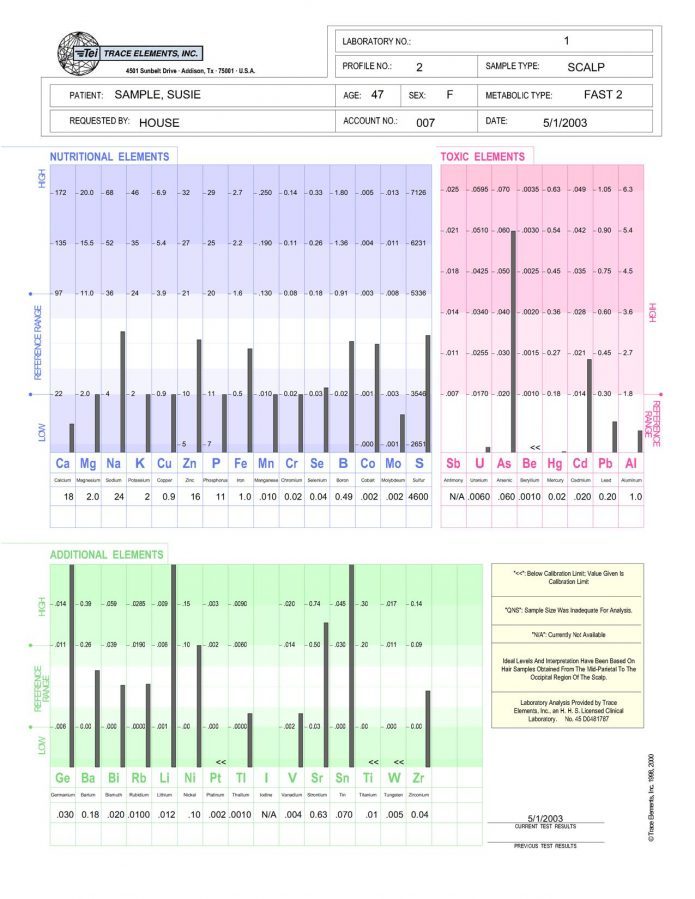
Table of Contents
Heavy Metals Issues
Public Health Burden due to Toxic Metals
Living in an industrialized society exposes all inhabitants to metals in the environment. Metals can be toxic (at times called toxic metals) to life in all but the tiniest of amounts, including lead, mercury, arsenic, cadmium, nickel, and aluminum.
Heavy metals are a significant concern for public health, as their accumulation can lead to serious health issues.
In fact, exposure to heavy metals can lead to neurological issues and other serious health complications.
Metals such as lead, mercury, arsenic, cadmium, nickel, and aluminum can be extremely toxic in even minute amounts.
Monitoring heavy metals in our environment is essential for ensuring safety and health.
It is essential to monitor exposure to these metals to mitigate their harmful effects on health.
These metals have been known to have adverse biological effects on humans for many years.
The nervous, vascular, and immune systems can be adversely affected by heavy metal toxicity. An article in the NEJM concluded that there is an inverse association between blood lead levels and IQ scores. The chief author, Richard L. Canfield, Ph.D1., stated in a subsequent interview, “There is no safe level of lead”.
Awareness of the presence of heavy metals in consumer products can help mitigate risks.
The increasing rates of cancer, vascular disease, dementia, and other diseases are directly related to the increase of toxic metals and other chemicals in our environment, as chronic, even low-grade, environmental exposures raise the body burden over time. The public health burden due to toxic metals is an acquired and reversible health risk for at least 80 million Americans.
Understanding the impact of these metals on public health is crucial for prevention and awareness.
Mercury
Some 300 tons annually of mercury are added to the American ecosystem from all industrial and consumer sources.
Mercury in both organic and inorganic forms is neurotoxic and is related to Autism2, Alzheimer’s disease, and Cancer. Metallic mercury is readily converted under physiological conditions and constitutes is a major public health risk. Primary non-occupational sources of mercury exposure in humans include: medications and devices (including amalgams and vaccines), metallic mercury, mercurial fungicides, water, and recreational exposures including from ceramic glazes.
The USA Environmental Protection Agency (EPA) and the Food and Drug Administration (FDA) have released guidelines for restricting fish consumption based on the mercury content.
Peer reviewed medical journals, such as the NEJM and JAMA and others, have published multiple recent articles about lead and mercury, even at low levels, affecting the entire vascular system, leading to hypertension, stroke, heart attack, cardiomyopathy and renal failure. Other journals have shown lead and other heavy metals as a partial causation of macular degeneration as well as decreased intelligence, reading disability, gout, thyroid diseases, and other physiologic problems.
Cadmium and Nickel
Cadmium and nickel are also potent toxins with similar mechanisms of action to arsenic, including cardiovascular risk. Cadmium also causes cancer.
Arsenic
Arsenic is another potent metabolic, hormonal, immune and gene toxin with cancer promoting effects. Primary sources of arsenic exposure in humans are water, food, arsenical biocides and therapeutics.
The EPA recommended, in 2001, a 10 ppb arsenic maximum acceptable level in drinking water. The Institute of Medicine of the United States National Academy of Sciences expert panel on arsenic, recommends a drinking water standard of less than 1 ppb because the cancer promoting effects of even this level of arsenic in the water are deemed to be too high.
Blood Levels of Metals vs. Tissue Levels
Blood levels of heavy metal toxicity are not representative of tissue levels and frequently fail to identify significantly toxic tissue levels, i.e. levels that are causing tissue damage.
Determination of blood metal levels is more useful for assessment of recent or ongoing exposure. In adults with past exposure, the correlation between blood lead and tissue lead is poor because the metal is no longer measured accurately in the blood.
Metals in the tissues vary significantly and many factors complicate the assessment of measuring tissue levels in a given individual. The assumption that serum levels correlate with body burden has been clearly recognized as erroneous. There is no single test that adequately determines the total body burden of toxic metals.
Metals are detoxified via the skin, hair, stool, and urine. However, all tests for mineral excesses and deficiencies have their limitations.
Thirty days after exposure there is little evidence of any remaining toxic metal in the serum as it has been deposited to other tissues and partially excreted.
Random urine tests for toxic metals show only what is being detoxified via the kidneys from serum. It is an indicator of recent exposure (2-3 days) only.
Hair Analysis for Toxins
Hair analysis for toxic metals, while controversial, has been widely accepted and validated for epidemiological studies by the World Health Organization and the EPA as being extremely useful and cost effective for identifying toxic metal exposures
These samples should be carefully collected and processed according to the instructions provided by the laboratory running the test,.
The most valid, readily available test to show the total body burden of toxic metals is the provoked urine test, where urine is collected and analyzed following administration of EDTA or other chelating agents, oral or IV.
A hair sample is much more practical, as it does not require a provoking agent. As long as hair dyes have been avoided for about two months, can give an indication of long term heavy metals exposure. Several of these tests are listed below.
Synergistic Effects
Synergistic effects of heavy metal combinations could be more damaging than a single toxin.
Uniqueness of People
One of the basic principles of integrative and environmental medicine is that every patient is unique, biochemically, genetically, and physiologically. Individual tolerance to a given level of a toxic metal varies considerably, based on the presence of other antagonistic metals, chemicals, and genetically determined detoxification capabilities.
Some individuals may be more susceptible to toxic effects of a heavy metal or other chemicals than others, for example: patients with autism, multiple chemical sensitivity, chronic fatigue syndrome, genetic deficiency of glutathione production, aberrant homocysteine metabolism, and other genomic variations may be more susceptible.
Summary
In conclusion, toxic metal toxicity can cause cellular damage and disease even in very small amounts. Given the growing evidence of correlation between toxic metal burden and disease states, any test showing heavy metals deserves to be treated, if only for preventative purposes. Ideal level of toxic metals in human tissue is zero, if we are to prevent the development of chronic illness.
FAQ’s on Heavy Metals
What are the 5 main heavy metals?
The 5 main heavy metals are lead, mercury, cadmium, chromium, and arsenic.
What are the Health Effects of heavy metals?
Heavy metals can have severe health effects, including organ damage, neurological issues, and cancer. Exposure can occur through contaminated food, water, or air.
What are the 23 heavy metals list?
Arsenic, Cadmium, Chromium, Cobalt, Copper, Lead, Mercury, Molybdenum, Nickel, Selenium, Silver, Thallium, Zinc, Antimony, Barium, Bismuth, Cerium, Gallium, Gadolinium, Indium, Lithium, Vanadium, Uranium
Products
At Home Tests
-
←→

Doctors Data Hair Toxic Elements Test
$159.00$123.00Doctors Data Hair Toxic Elements Test is a noninvasive screening hair test reports an expanded lineup of toxic metals as well as specific nutrient elements.- Buy 2 at $119.00
Doctors Data Hair Toxic Elements Test
At Home Health Tests, Toxic Metals Tests, Hair Tests, Autism Tests, Detox Solutions, Diabetes Solutions, Fatigue Solutions, Memory Loss Solutions, Autism Solutions$159.00 $123.00Successfully Added to your Shopping CartAdding to Cart... -
←→

Analytical Research Labs Hair Test
$179.00$149.00Providing a mineral blueprint of one’s biochemistry, an Analytical Research Labs Hair Minerals Test reports levels of minerals and heavy metals in your body giving possible reasons for your symptoms, with suggestions for nutritional supplements and diet changes. Hair tissue mineral analysis can provide pertinent information about balanced nutrition, one’s metabolic rate, energy levels, sugar and carbohydrate tolerance, stage of stress, immune system and glandular activity.- Buy 2 at $145.00
Analytical Research Labs Hair Test
$179.00 $149.00Successfully Added to your Shopping CartAdding to Cart... -
←→

Trace Elements Nutritional Deficiencies Hair Test
Nutritional Tests, At Home Health Tests, Toxic Metals Tests, Hair Tests, Autism Tests, Immune System Tests$188.00 $148.00Successfully Added to your Shopping CartAdding to Cart...
Supplements
-
←→

Zinc Arginate with Aspartate
Supplements, Mineral Supplements, Skin Solutions, Immune System Solutions, Amino Acids Supplements, Allergy Solutions$8.10Successfully Added to your Shopping CartAdding to Cart... -
←→

Magnesium Orotate
Supplements, Mineral Supplements, Heart Solutions, Immune System Solutions, Gastrointestinal Solutions, Allergy Solutions$25.10Successfully Added to your Shopping CartAdding to Cart... -
←→

K-MG Potassium Magnesium
Supplements, Mineral Supplements, Headache Solutions, Heart Solutions, Muscle Solutions, Lung Solutions, Memory Loss Solutions, Anxiety, Stress, Depression Solutions$13.10Successfully Added to your Shopping CartAdding to Cart... -
←→

Membrane Complex
Supplements, Mineral Supplements, Heart Solutions, Skin Solutions, Probiotics Supplements, Bone Solutions, Lung Solutions, Muscle Solutions, Immune System Solutions$15.00Successfully Added to your Shopping CartAdding to Cart...
References
- Intellectual Impairment in Children with Blood Lead Concentrations below 10 μg per Deciliter [nejm.org] ↩︎
- .The relationship between mercury and autism [Science Direct] ↩︎
- https://doi.org/10.1007/978-3-7643-8340-4_6
- https://doi.org/10.1002/tox.20395
- https://doi.org/10.1093/toxsci/59.1.185
- https://doi.org/10.1289/ehp.11167
- https://doi.org/10.2174/0929867053764635

One thought on “Heavy Metals and their Affect on Health”